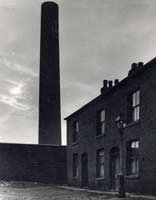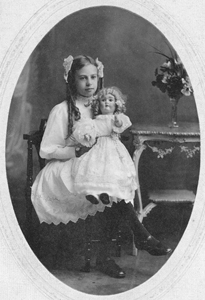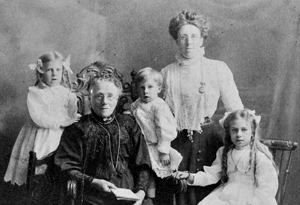
Oldham Past Times |
 |
|||
Oldham Historical Research Group meets on the third Wednesday of the month at Oldham Local Studies & Archives, 84 Union Street, Oldham. OL1 1DN from 7-9pm. The aim of the group is to encourage an interest in joining just come along to any of our meetings. Phone number is 0161 770 4654. May I say a Happy New Year to all are members and staff at the archives?, what a interesting run up to Christmas with talks from Gordon Lees on the Bombs that were dropped on the town and the people who lost their lives, John Holmes on Trams , Sheila Goodyear on the use of Audio Visual in recording history, John Beever on the Suffragettes in Oldham , Mark Beswick on the Fire Brigade, Frank Seddon Jones on the Hathershaw and a talk by Oldham basketball team, and myself on Growing up in Coldhurst. Looking forward to talks this year in January Peter is giving a talk on Methodist Church in George street. So if anyone as any ideas for further research and talks, please tell Roger or either John or myself. BASEBALL IN OLDHAM. Yes baseball in Oldham and its not new but as been here since and what an interesting evening. Baseball came to Britain in 1874 when the Boston Red Stocking ( known now as the Red Soxs) and the Philadelphia Athletics took part in an extensive tour of the country, in 1899 the Chicago White Stockings ( today known as Chicago White Soxs) and a All Stars team made up of players from the other National League clubs took place. This was a procurer to the first professional baseball circuit in Britain in 1890. So when did they start here in Oldham information tells us in 1935 a team was formed and played at Oldham Greyhound Stadium at Watersheddings by Mr William Brown, who owned the stadium and took the name Oldham Greyhounds. (Unfortunately the stadium and rugby club as gone and houses built on the land.) They were formed so that they could take part in the John Moore’s North of England Professional Baseball League on the 11th May 1935, where the greyhounds played Manchester North End Blue Soxs many of the players played Rugby league international such as, Jim Sullivan came from Alabama age of 27 years and described as a born pitcher he played for the greyhounds, also Billy Riches also played for them 1935-36 They were the first professionals in England since 1890 but were not credited. 2nd May 1936 the season started and they regularly attracted 1100-1500 fans and again they topped the league. On 15th August the B.B.C broadcasted the match when the Greyhounds played Rochdale Greys which was played at Spotland Road, the commentary was provided at secretary of Manchester County Baseball Association. They ended the season with a win against Manchester North End Blue Sox, to clinch the title and trophy which was presented by John Moore. The team was John Gaunt, Sid Gaunt, W.Hicklin,J. McNally, H. Richardson, Zola Alpert, Peter Stevenson, Billy Riches, Tommy Rees, Leo Fred, Scotty Palfrey and G.Mellor. In the 1930s as well as the Greyhounds and Rochdale there were. Ashton Hawks, Avro Spartans, which may have played and based at the Lancashire Club in Failsworth, Measurement based at Moorcock Measurements Instruments factory at Dobcross. Based at Heywood were the Sunfield Diamonds. Bradford Northern, Hurst Hawks, Salford Red Devils, Preston North End, Oldham Dons, Belle Vue Tigers, Hyde Grasshoppers, Bolton Reds/ Scarlets, Liverpool Giants, Halifax, Chronicle Extra’s ? Oldham Chronicle Newspaper works team. July 1937 at Waithlands a game for the blind who were coached by a Mr Jim Davy. Based at Ferranti’s Hollinwood the Ferranti Sparks they beat the Rochdale Emeralds. Jim Davy who post war ran the New Moston Dodgers in the Manchester and District League. Oldham Cardinals featured on the Ashton Seagulls programme the date is unclear but could have been 1930s. Oldham finally reached the National final in 1938 they were in the Lancashire / Yorkshire Major League, the game was played at Spotland Road ( Rochdale) and the home team Rochdale Greys won in front of a crowd of 3,776. Also this year four of the Greyhound players were in a combined team with the Greys against the United States Navy team. 1939 Due to the outbreak of war was the last session for the Greyhounds and proball in England. 16th June Oldham St Mary’s played against Rochdale Greys. After the war baseballs restarted in Britain but not like in the 1930s when professional were included, it was strictly amateur’s former U.S and Canadian servicemen who stayed here after the war often supplement ed local men on the team. Sadly Oldham greyhounds didn’t reappear after the war, but other Oldham teams did like the Saints, Owls and Eagles. 29th June 1948 Oldham Saints played Rochdale, possibly associated with Oldham St Anne’s Rugby. 10th July 1948 Hollinwood youth team played against the Rochdale Greys, Oldham Owls played in Block Lane, Chadderton. 1950s They may have been in the Manchester and District League or in the same youth league as Oldham .Eagles that played in Oldham youth league.1952-1955 the league was headed by Oldham Athletic Football Club manager George Hardwick; the team included Harry Anderton who was involved in setting up the Oldham North Stars team in2007. Played their games at Block Lane, Chadderton,( the diamond this is the shape of the bases is now covered by houses behind the Hare and Hounds pub. Also in 1955 it appears that yet again baseball disappeared in Oldham due to National service it was 2006 before there was a revival in the game and the Oldham North Stars was formed they played their first game on 2nd June 2007 against Nottingham Thieves. If you are interested in joining for further information you can contact Oldham Baseball Club call Tony on 07866535043 after 6pm.or email OLDHAMBASEBALL@GOOGLEMAIL.COM, or visit www.oldhambaseball.webs.com, they are recruiting players adult teams 16 plus with no age limit, no experience necessary, all equipment provided. If you wish to learn more about how to play the game or its history you will find it on.bbchistoystory.webs.com/overview or www.freewebs,.com. (I don’t much about the game the information of the above article is what I found on other sites.)
Not much of a view, today but170 years ago it would have been a different story. In 1840, two adjoining cottages, known as Failsworth View, were built on what was then known as the New Turnpike Road between Oldham and Manchester, Later to be known as Oldham Road. The old, main road, at that time went along Wickentree Lane and past the Old Packhorse Inn. There was a cottage about 100 yards from “Failsworth View” but little else to be seen other than fields. The builder of these 2 cottages was a man named Robert Schofield and he was the 2x Great Grandfather of my husband, Martin Goodyear. The cottages have remained in the family’s possession since that time.
“Auntie who is this lady?” queried my eight year old great nephew holding up a very old photograph, but before I could answer a little voice piped. “Doggie, doggie, woof, woof.”And it was the three-year-old little sister of the speaker expressing her interest, not in the lady, but certainly in the lady’s pet as her eager fingers attempted to grasp the fading carte-de-visite’ revealed. Whilst in a fit of nostalgia, I had surrounded myself with family reminders of an earlier age. “Tell me a story about this doggie” pleaded the little girl, completely taking over the situation, whilst her brother had to wait the reply he was seeking. “Well, my dear, the little dog was called Fido. He lived in this house years ago and he was a good companion to the lady in the picture. The lady became my mother, who and makes her your great-grandmother. Too young to be interested in the genealogical aspect, comments rolled out which developed into a quick question and answer session. “He‘s sitting up; is he not playing with the lady?” “Oh no, he is being obedient; see, the lady has raised her finger to him. I think she must have said; Now Fido, you be a good boy.” “Why, what had he done?” “I don’t really know, but he could have been chasing boys and girls for their pocket-money.” This news indeed for, up to now, in spite of her marked interest in domestic animals, in her short life; never had she found a dog which liked money. Anticipating further questions, I volunteered the theory that he must have noticed dropped coins rolling and, being speedier than the owners, he won as a visit to his kennel often testified. Stunning information of this nature put temporary halt to the rapid interrogation and the thoughtful look on her face was an indication that a poser was being dealt with by her active brain which, no doubt, would demand a further crop of answers in due course. However, the boy, quick to spy the advantage this lull had given him commented, “I like the bag of gold story best”. I expected to be asked to tell this once again but was spared the repetition, for Rachel, having obtained her second wind, was this time attracted by passing traffic so decided to monopolise her brother’s skills and ingenuity by suggesting he should convert the settee into a dormobile. A lightning change of interest therefore took place. Michael liked the Bag of Gold Story. So did I. It was one beloved of my childhood, told to me by my grandmother, repeated by my mother and, also, in my presence, told to the many visitors to our family home. My maternal grandmother’s father, Robert Schofield,, must have been a real home maker. He obtained a plot of land in a cornfield on which he built, in 1840, two four-roomed cottages which subsequent descendants have altered to suit their requirements. In one of these I now live and, from being on the New Road has, in the fullness of time, found itself on the A62 so there I am, behind my double yellow lines, with assortment of traffic continually rushing by; a situation which my forebear could never have envisaged. One day when great-grandfather was busy with his building project he noticed that a passing horseman had dropped something from his saddle but apparently, the rider was unaware of this for there was no interruption of his steady trot as he proceeded towards Manchester. Crossing to investigate, great-grandfather was surprised to find, on the rough pathway, a bag containing golden coins which must have fallen from the saddle. Determined to restore the money to its owner he followed the rider but he had a long distance to cover and it was not until he recognised the horse, tethered outside the “ Royal Oak “ near Miles Platting, that he was able to identify the rider amongst the travellers congregating in that hostelry. On the restoration of this cash the owner was pleasant conversation which ensued it was revealed that the horseman was himself a builder who was on his way to pay his workmen their wages. He was interested to hear about the cottages and said he had noted them in course of erection as he had passed through Failsworth. Pleasantries concluded great-grandfather trudged back-that- that- just an incident and a six mile walk. There was, however, a surprise in store for him. Imagine his amazement when a wooden beam was delivered to the site, addressed to ‘the honest man building the cottages,’ with the compliments of the owner of the bag of gold, and with a request that the beam be incorporated into the new structure. How my grandmother gloried in telling this story about her own father. “Honesty is the best policy,” she would say in ringing tones as she pointed upwards to the sturdy beam. What a delightful story by Sheila Goodyear. Taken from the manuscript “Robert a’th’’ View’ by Florence May Goodyear 1902-1996.
I first became interested in compiling a dossier of my time in the NHS when I attended an NHS memory day, initially introduced by John Beever. My earliest memories of Oldham Royal Infirmary began in 1967 when I started as a student radiographer after leaving school it was not my first choice, that being to work in the laboratory- although I suppose I always wanted to work in the NHS. It was my mother who persuaded me to apply for a job as a radiographer. In those days the hospital was run by a Matron (Matron Flood) and a hospital secretary (Norman Yardley.) The Matron was in complete charge of the hospital and knew all the staff and the; patients unlike today where there are to many levels of management everyone misses out, including the patients whose care and wellbeing seems to be secondary to targets and red tape. I trained at Salford Collage of Technology and involved a block release which was two weeks at collage followed by four weeks at the hospital. The x-ray department was situated in the basement at the hospital near to casualty and the orthopaedic department. The kitchens were also on the same corridor. If you visited it at night or early morning the floors was covered with cockroaches!. Because of its position in the hospital in the winter time you went at lunchtime you would never see the light of day, from what I remember the wards were, Platt and Davies ( Medical), Victoria and Nicholls ( Surgical ), Lees and Fawcett ( Orthopaedic),Wainwright ( Female Surgical). I qualified in 1970 and worked at the infirmary until 1973, when I left to work at Hawker Siddley in Woodford (now B.E.A systems,) as a NDT Technician (Non Destructive Testing,) x-rays being one of the methods used for testing along with ultrasound and carbon fibre. I seem to remember that my salary when I left the hospital was £943p.a; my salary at Hawker Siddley was £1,750 more than the Superintendent a clear case at the private sector versus the public sector. I was very happy at Oldham Royal Infirmary, only leaving for the increased salary, the staff were very friendly and it was a very good place to work, in those days patients care was a paramount and the staff were looked after, unlike today where the whole setup is run as a business. As a result because I missed the N.H.S, I returned to it in 1975 in Lewisham Hospital in London where I stayed for 12 months, I then worked at the Royal Lewisham Hospital in London where I stayed for 12 months. I worked at the Royal Albert Edward Infirmary in Wigan before embarking on my sales career selling medical products. I returned to work in the N.H.S in 1999 and found that it was nothing like it use to be, the original aim at the N.H.S when it was setup in 1948 seemed to have been lost. It was only there to format the managerial careers at those who worked in it. Also the current policy at closing down varies hospitals to promote centres of excellence is in my view counter productive. There were six hospitals in Oldham. Oldham Royal Infirmary, Boundary Park, Westhulme, Racefield, Strinsdale, Dr Kershaw’s. Now there is only one Royal Oldham Hospital, a very sad state indeed. --------------- |
||||

